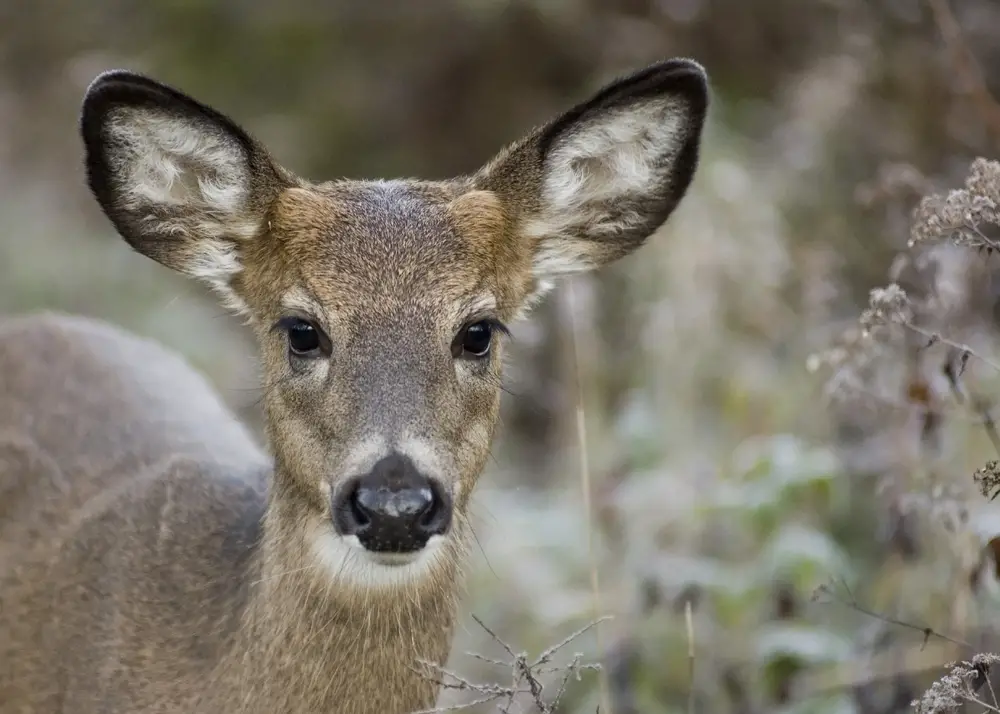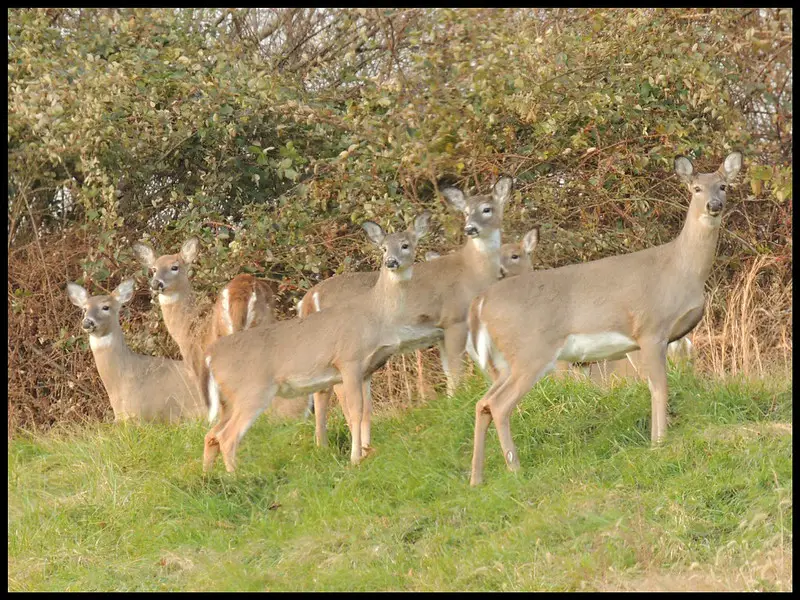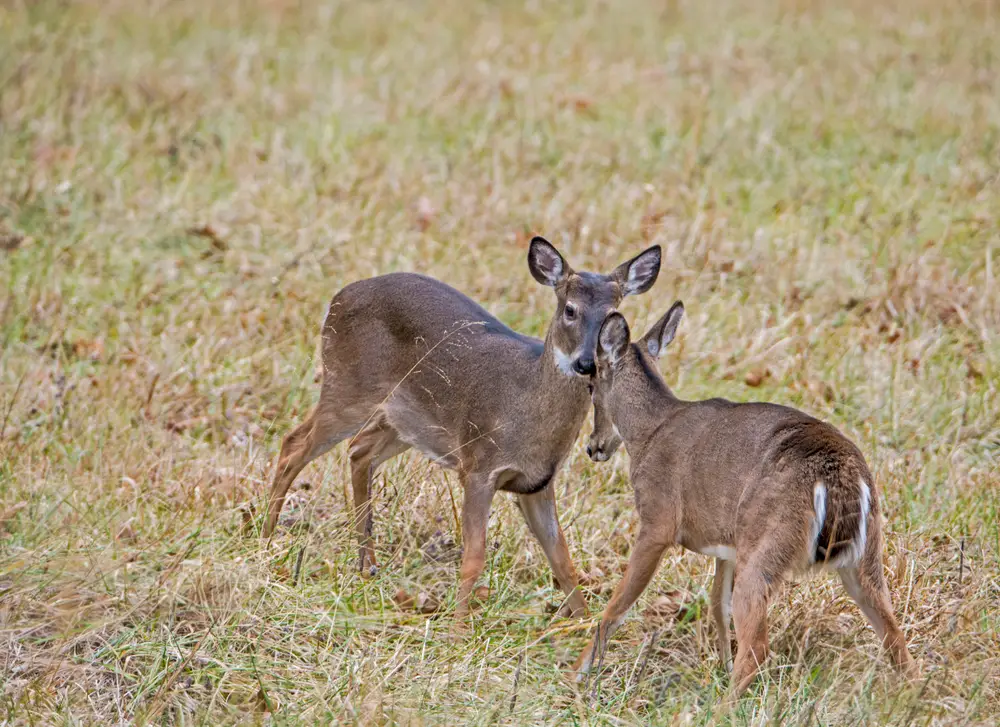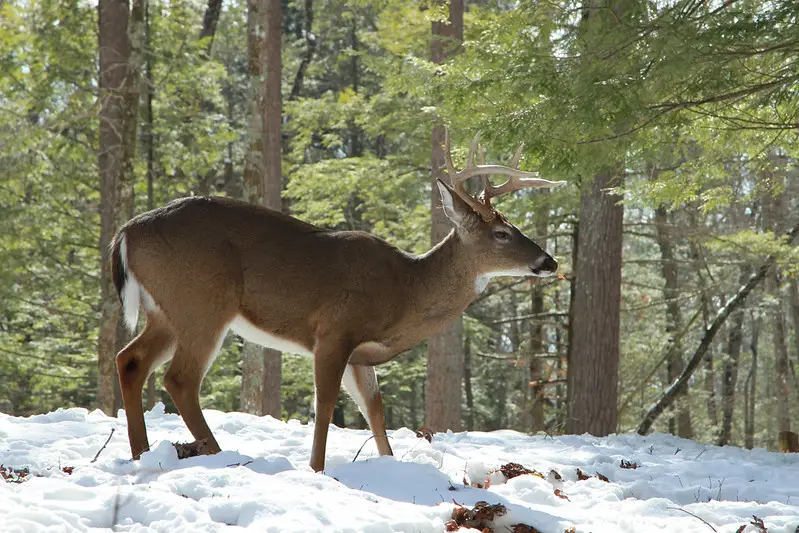If you need to know how to avoid taking button bucks while deer hunting, there are only two possible reasons. Either you will be deer hunting in an area with antler restrictions, or you want to help preserve someone else’s future trophy.
And yes, it will be someone else’s trophy. At least 70% of all male fawns will establish new territories miles away from where you gave them their second chance at life.
Either way, to achieve your goal of not taking a button buck, you must know how to tell does and button bucks apart.
Related: How to call in a doe.

Button bucks are male fawns whose antlers haven’t broken through the skin. Deer antlers grow from the pedicels. When a young male’s antlers first begin to grow, there is a period when the pedicles have formed two skin-covered knobs. Until the antlers break the skin, the knobs look like buttons.
Related: What are deer warts?
Avoiding button bucks isn’t exactly easy!
Many deer hunters accidentally take a button buck they misidentified as a doe every year. If you haven’t hunted before, this might seem hard to understand. That’s because you’ve only seen clear, close-range pictures of button bucks sporting well-developed buttons—photos like the one above.
In the field, however, it is often difficult to tell a button buck from a doe. Fortunately, there are four things you can do to avoid wasting an antler-less tag on a button buck.
To avoid taking a button buck, take additional time to confirm the sex of any deer with one or more of the following characteristics. A head with a short, snobby nose. Behavior matching that of a careless fawn. A deer that is traveling alone. A body that is square-shaped.
Related: How to call in deer.

Using head shape to identify a button buck.
Deer with short-looking noses are typically still fawns. Their spots may be gone, but their noses haven’t yet had time to lengthen into the proper adult shape.
A button buck will have a flatter-looking head than a doe’s roundish one. This flattening is due to the growth of the pedicle on the skull.
Why do some female deer have antlers?
The difference between the body of button buck and doe.
Antler-less deer come in two shapes, square or rectangular.
Fawn males have blocky, square-shaped bodies. Their necks are short, and their muscles aren’t well developed.
The adult does have rectangular bodies. They have longer necks and more developed muscles. Older female deer sometimes sport swaybacks and pot bellies.
Related: Deer snorts, flagging tails, and fleeing.
Do deer car whistles really work?

Button bucks sometimes travel alone.
Every veteran deer hunter has heard this advice before. “Never take an antler-less deer that is traveling alone.” This is because it’s highly likely to be a button buck most of the time. Adult does normally travel with family members and/or their offspring during the fall and winter months.
As the days begin to shorten, does start to create or reestablish relationships with other does and assemble into herds. This herding behavior provides their now-weaned fawns with increased security from predators. This protection is vital when their mothers begin to cycle and run off for periods.
That protection is sometimes lost when male fawns temporarily separate from their mothers during the rut. Male fawns are also prone to try and be the first to enter an area with a food source or bait pile.
If you have a deer food plot you are hunting over, be especially careful when a solo antler-less deer shows up.
And just because a pair of deer are traveling together does mean it’s safe to shoot without first carefully scrutinizing them.
Orphaned twin fawns usually stick together for a long time. With a doe around to compare them to, you might have difficulty identifying the sex of either deer.
To avoid taking a button buck, wait until you have a group of deer and a block of time to note their body shape differences, check for pedicles, and observe their behavior and how they interact with each other and the environment.
Related: What are the best hours for deer hunting?

Using behavior to identify button bucks
Fawns act like children. They can be careless, curious, and playful. They keep their heads down while eating for a very long time, unconcerned about a possible nearby predator. They will quickly move toward a source of food or water.
Does, on the other hand, will be more alert than fawns. A doe will stand quietly before moving toward a food source, letting her eyes, ears, and nose detect any dangers. And only a doe will kick at a misbehaving fawn.
Well, now you know how to avoid having to put your antler-less tag on a button buck. All that is left is for you to get out into the field and get some experience under your belt. With time, you’ll be able to identify a button buck from quite some distance. Good luck!
Related articles:

